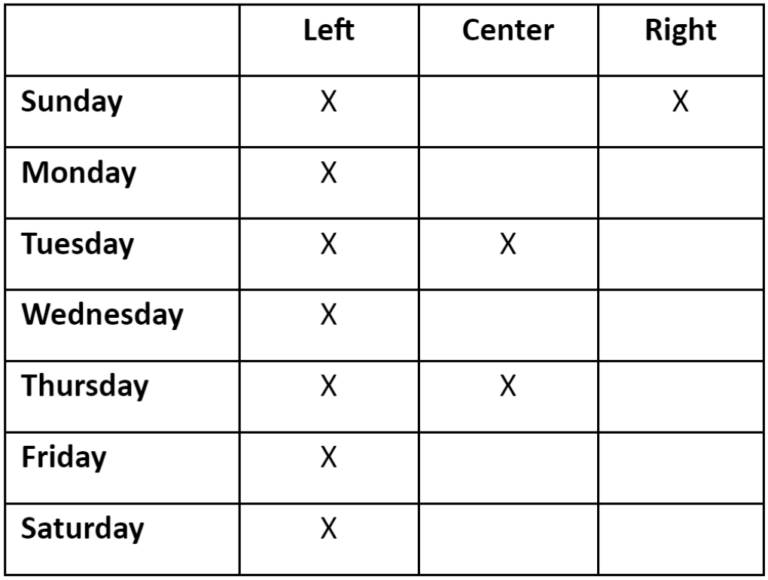The Notecard Problem
If you are preparing for the SAT or ACT with Mindfish, you may have noticed that you’re accumulating a lot of something: notecards. Notecards are a highly effective study tool for many aspects of the SAT and ACT–math formulas, grammar rules, question type identification, and vocabulary . But again, useful or not, you’ve noticed that you have a lot of them, and your pile of notecards has gotten so big that the prospect of getting through all of them has become pretty intimidating.
Indeed, studying a huge stack of notecards every single day can potentially be exhausting, but at the same time you also know that you need to study every day to maximize knowledge retention. But remember, during test prep, using your energy efficiently is key. So, how can we study notecards efficiently when we have so many?
How to Study Notecards Efficiently
The Three-Pile Method
The three-pile method is a great strategy to reduce the number of notecards you have to study at once and ensure that you are studying the topics that you need the most help with. Illustrated below, this method requires several steps:
1. Place your whole pile of notecards in front of you.

2. As you review your notecards, when you get one correct, place it in a pile to the right. When you get on incorrect, place it in a pile on the left. When you are done, you should now have two piles.

3. Place your left-most pile in the center, leaving your right pile on the right.

4. Repeat step 2, placing correct notecards in the center, and incorrect notecards on the left.
You should now have three piles:

5. Now, study the left pile every day, the middle pile twice a week, and the right pile once a week. Your study schedule may look something like this:

6. If you begin to consistently get a notecard correct (for example, 3 times in a row, but really whatever number is comfortable for you), move it to the right by one pile. If you get one wrong, move it to the left one pile.
You can use this strategy for each subject of the test separately (Reading, English/Writing, Math, Science (ACT only)), or you can do it for all your notecards together.
The three-pile method is a great strategy for keeping your notecards organized, ensuring that you’re studying the information in a prioritized manner, and making your pile of notecards feel less intimidating.
Effective Notecards
Studying notecards every day is a great way to prepare for the test, but it is important to make notecards in an effective way. Here are some tips for making great notecards:
1. Make your notecards in quiz format.
Put a prompt on one side of the notecard and write the answer on the other side. Quiz-style math or science notecards may look like the example below:


For the Writing/English section, Mindfish tutors often recommend making notecards to help you learn how to identify each type of question in the section. The table below shows how to spot punctuation and diction questions, examples of what the answer choices might look like, and the rules to apply to the question.

Good, quiz-style notecards for punctuation questions may look like the example notecard below, which has the example answer choice on one side, then the type of question and rules on the other side. This type of notecard can help train you to identify types of questions on the section.

2. Keep it short and simple (KISS).
For notecards, minimalism is key. Condense long sentences down into bullet points. Use shorter fragments of ideas that are easier to remember and will prompt you to remember the entire point.
Looking at the punctuation notecard from earlier, the rules on the notecard were listed as:
- Ind/dep + app
- Punc. rules
This shorthand notation is easier to read quickly, and reminds us of the two punctuation steps:
- Identify independent and dependent clauses. Check for appositives.
- Apply punctuation rules.
The shorter notation allows us to review the notecard more quickly and memorize the rules while prompting us to remember our punctuation strategies.
3. Use colors.
Using different colored notecards or pens for different topics or subjects can help with memorization. Especially for visual learners, color coded notes are very effective. Even for non-visual learners, color coded notecards may be easier to organize by topic/subject quickly. For example, consider dedicating a specific color of notecard for each subject, and a specific pen color to each topic. Below is an example of how a student may color code notecards, but it’s important to figure out what system works best for you.

Talk to Your Tutor
Studying is different for every student. While this general advice may be helpful to many, it might not be perfect for everyone. Your Mindfish tutor can help you fine-tune your notecard studying to fit your particular learning style. So, if you ever feel confused or overwhelmed with your notecards, reach out to your tutor!
Happy studying!
Interested in learning more about Test Prep at Mindfish?
Contact us today to find out what our dedicated tutors can help you achieve.





